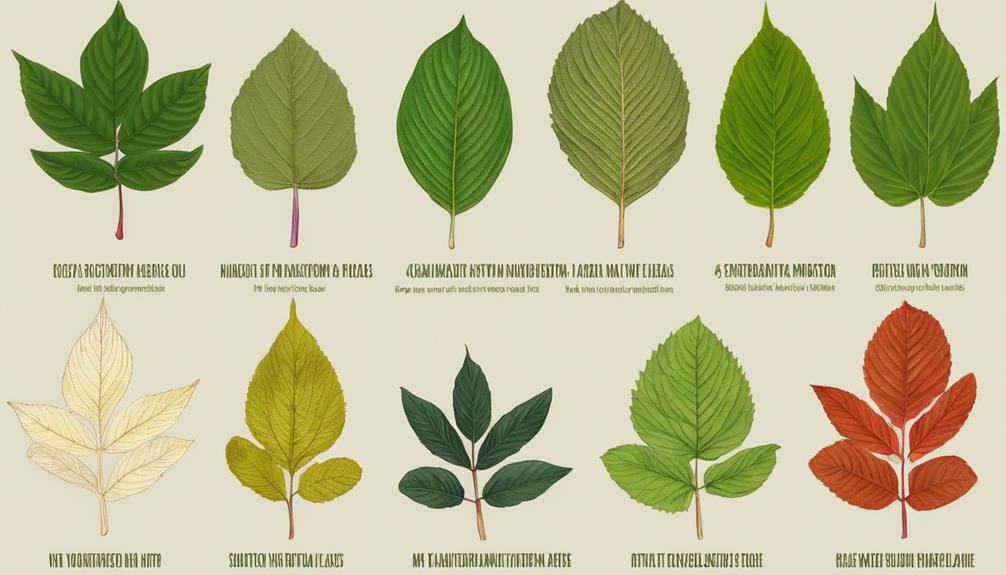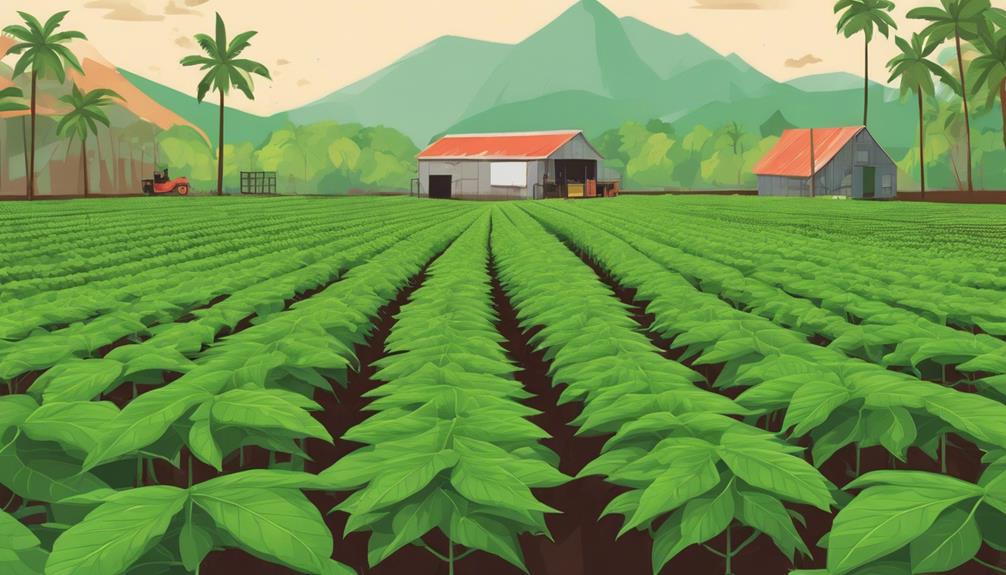As you explore the intricate composition of the Kratom family, you'll uncover a web of botanical diversity and alkaloid richness that distinguishes each species within this ancient lineage. The genetic makeup of Kratom plants holds clues to their varying medicinal and recreational potentials, with nuances in alkaloid concentrations waiting to be unraveled. Understanding how these elements interplay can shed light on the complex tapestry of effects that Kratom offers, hinting at a world of possibilities for both traditional and contemporary applications.
Key Takeaways
- Kratom belongs to the Rubiaceae family, rich in diverse alkaloids.
- Variability in alkaloid content exists among different kratom species.
- Leaves contain key alkaloids like mitragynine and 7-hydroxymitragynine.
- Genetic diversity is identified in the Kratom family through DNA barcoding.
- Characteristics influenced by plant age and geographical location.
Kratom Family Overview
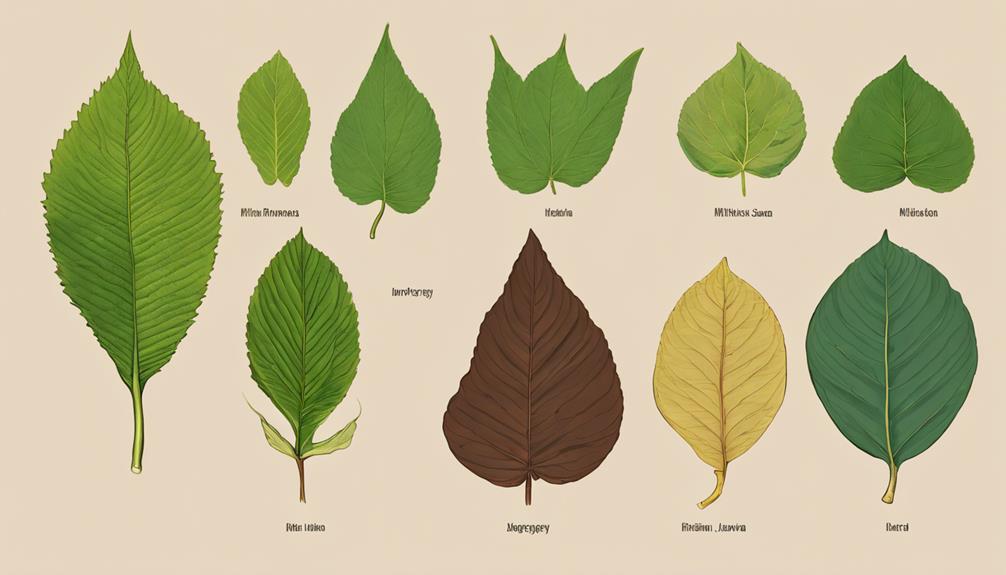
The Kratom Family, belonging to the Rubiaceae family, encompasses various species of the Mitragyna speciosa tree native to Southeast Asia. Kratom, also known as Mitragyna speciosa, contains alkaloids such as mitragynine and 7-hydroxymitragynine. These alkaloids are primarily found in the leaves of the plant, with varying concentrations depending on the specific species and growth conditions. In Southeast Asia, the traditional use of Kratom has been well-documented, with communities utilizing the plant for its medicinal properties and recreational purposes.
One of the key alkaloids present in Kratom, mitragynine, has garnered attention due to its opioid-like effects. The leaves of the Kratom tree are commonly chewed or brewed into teas for their stimulating and pain-relieving properties. This traditional medicine has been a part of Southeast Asian culture for generations, where it is used both ceremonially and for daily wellness routines. The Kratom Family's diverse range of alkaloids and traditional use make it a fascinating subject for those interested in botanical medicine and natural remedies.
Botanical Diversity of Kratom
Exploring the botanical diversity of Kratom reveals a rich tapestry of species within the Mitragyna speciosa tree family, each harboring distinct characteristics and alkaloid profiles. When pondering the botanical diversity of Kratom, factors such as plant age, geographical location, and DNA barcoding play essential roles in determining the alkaloid content of the leaves. Here are some key points to ponder:
- Variability in alkaloid content: Different species of Kratom exhibit variations in mitragynine concentrations, leading to diverse alkaloid profiles across the genus.
- Local names: Kratom is known by various local names in Southeast Asia, reflecting its cultural significance and widespread usage in the region.
- Genetic diversity: DNA barcoding techniques help identify and classify different Kratom species based on their genetic makeup, aiding in research and conservation efforts.
- Rubiaceae family: Belonging to the Rubiaceae family, Kratom shares botanical characteristics with other plants like coffee, highlighting its evolutionary relationships within the plant kingdom.
Alkaloids in Kratom Leaves
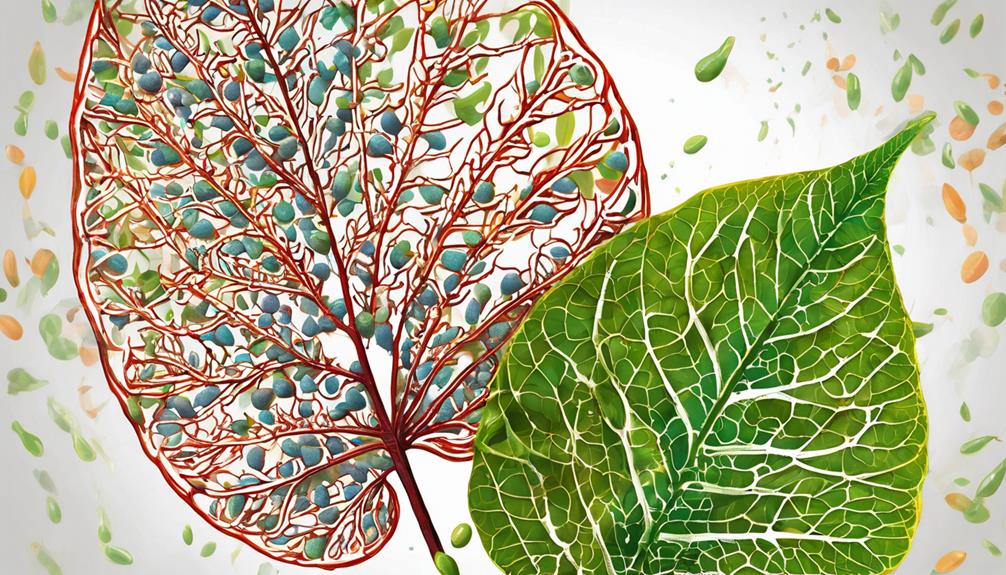
Alkaloids present in Kratom leaves, namely Mitragynine and 7-hydroxymitragynine, are key components responsible for its pharmacological effects. The concentration of alkaloids in dried Kratom leaves typically ranges from 0.5% to 1.5%. In a forensic urine sample from a regular Kratom user, the concentration of Mitragynine was found to be 167 ng/ml, highlighting the detectability of these alkaloids in bodily fluids. When considering potency, 7-hydroxymitragynine exhibits stronger antinociceptive effects in comparison to both Mitragynine and morphine. However, it's crucial to emphasize that conventional immunological drug screening tests are unable to detect Kratom alkaloids, posing challenges in their detection through standard screening methods. These findings underscore the unique pharmacological properties of Kratom alkaloids, particularly Mitragynine and 7-hydroxymitragynine, within the domain of pain relief and their intricate interplay with bodily systems.
Medicinal Properties of Kratom
With a history rooted in herbal medicine practices, kratom showcases a diverse array of potential medicinal properties that have intrigued researchers and practitioners alike. When exploring the medicinal properties of kratom, several key aspects stand out:
- Alkaloids: The presence of alkaloids in kratom, particularly mitragynine and 7-hydroxymitragynine, contributes notably to its medicinal potential.
- Opioid-like properties: Kratom exhibits opioid-like properties that make it valuable for pain relief and potentially addressing addiction withdrawal symptoms.
- Stimulant effects: In addition to its pain-relieving properties, kratom also displays stimulant effects, providing energy and focus to users.
- Traditional uses: Traditional applications of kratom include mood enhancement, appetite stimulation, and acting as a local anesthetic, highlighting its versatile nature in herbal medicine practices.
Research suggests that kratom products have the potential to be used in treating various conditions like pain, depression, and addiction withdrawal, making it an intriguing subject for further scientific exploration.
Recreational Effects of Kratom

At low doses, kratom can induce mood enhancement, attracting individuals seeking a recreational uplift. Additionally, its potential for pain relief makes it appealing to those looking for a natural alternative to manage discomfort during recreational activities. These effects contribute to the recreational popularity of kratom among certain populations.
Kratom's Mood Enhancement
For recreational users, kratom's mood-enhancing effects offer a pathway to euphoria and relaxation, akin to the sensations induced by opioids. Kratom contains alkaloids that interact with opioid receptors in the brain, leading to various recreational effects. When consumed in lower doses, kratom can provide a sense of euphoria and relaxation, similar to the effects of opioids. Users may also experience sedation or stimulation depending on the dosage and strain of kratom consumed. Additionally, kratom's mood-enhancing properties can boost sociability and create an overall feeling of contentment. Many recreational users turn to kratom to alleviate stress, anxiety, and depression, seeking its mood-enhancing benefits for a sense of well-being.
Kratom's Pain Relief
Kratom's pain relief properties stem from the presence of alkaloids such as mitragynine and 7-hydroxymitragynine, known for their analgesic effects. These alkaloids interact with opioid receptors in the brain, producing effects similar to opioids but with milder intensity. The opioid-like effects of kratom at higher doses contribute to its pain-relieving capabilities, offering a natural alternative for individuals seeking relief. Additionally, kratom's local anesthetic properties further enhance its efficacy in managing pain. Users typically experience a rapid onset of pain relief within minutes of consumption, with effects lasting for several hours. This prolonged duration of action makes kratom a desirable option for individuals looking for sustained pain relief without the potential drawbacks associated with traditional opioid medications.
Interaction With Opioid Receptors
Mitragynine and 7-hydroxymitragynine, key compounds found in kratom, exert their effects by binding strongly to human opioid receptors. These interactions play an important role in the overall pharmacological profile of kratom. Here are some key points to keep in mind regarding the interaction of kratom with opioid receptors:
- 7-hydroxymitragynine demonstrates potent antinociceptive effects, highlighting its potential for pain relief.
- Combining mitragynine with morphine can enhance pain relief and potentially prevent the development of tolerance to morphine.
- 7-hydroxymitragynine has shown abuse liability and addictive properties, increasing the self-administration of morphine.
- The conversion potential of mitragynine to 7-hydroxymitragynine influences the activity observed in in vitro studies, contributing to the complex nature of kratom's interaction with opioid receptors.
Understanding these intricate interactions sheds light on how kratom exerts its effects and its potential implications for pain management and addiction.
Kratom Species and Varieties
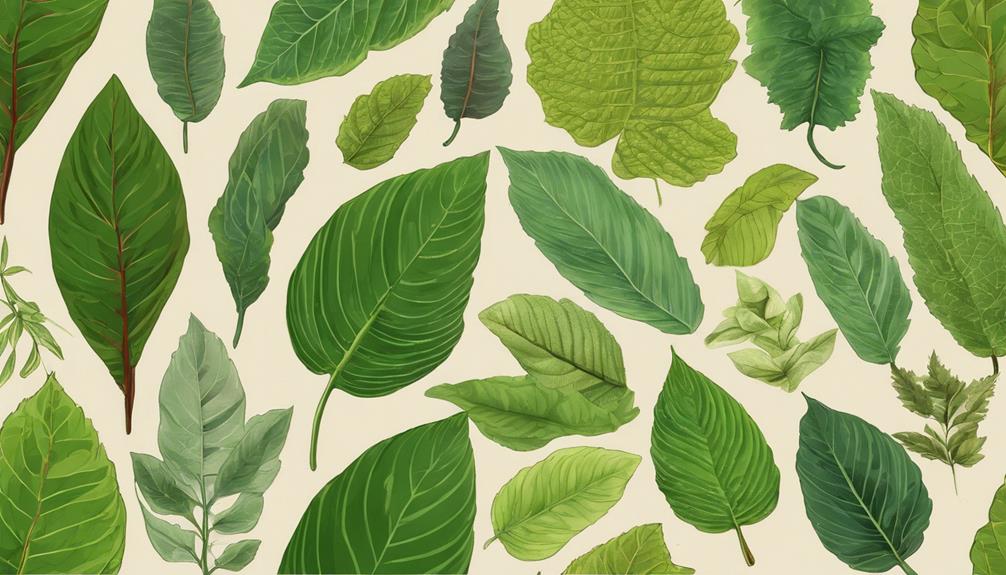
Exploring the diverse varieties of kratom within the Mitragyna speciosa species sheds light on the unique alkaloid profiles and effects associated with each type. Kratom, a member of the Rubiaceae family found in Southeast Asia, encompasses varieties such as Thai, Bali, and Maeng Da. These different kratom varieties exhibit variations in alkaloid concentrations, influencing their potency and medicinal properties. For instance, Thai kratom is known for its stimulating effects, Bali kratom for its relaxing properties, and Maeng Da for its potent nature. Understanding the specific alkaloid profiles of these kratom varieties is essential for individuals seeking particular effects. The intricacies of the Mitragyna speciosa varieties contribute to the complexity of kratom products available, offering users a diverse range of options to choose from based on their preferences and needs. By delving into the distinct characteristics of each kratom variety, consumers can make informed decisions to achieve the desired outcomes.
How Does the Composition of the Kratom Family Affect the Different Colors of Kratom?
The Kratom color guide affects the different colors of Kratom due to the varying levels of alkaloids present in each strain. For example, red Kratom contains more 7-hydroxymitragynine, which results in its relaxing effects. Meanwhile, white Kratom has higher levels of mitragynine, leading to increased energy and focus.
How Does Kratom Interact with Different Types of Food?
When it comes to understanding how kratom interacts with different types of food, it’s important to consider factors such as digestion, absorption, and metabolism. Certain foods may enhance or inhibit the effects of kratom, so it’s essential to be mindful of what you consume alongside kratom. This kratom and food article provides valuable insights into the topic.
Geographic Distribution of Kratom
In Southeast Asia, the geographic distribution of kratom, scientifically known as Mitragyna speciosa, encompasses countries like Malaysia, Thailand, and Indonesia. Kratom thrives in tropical climates with high humidity and rainfall, making it ideal for cultivation in these regions. The tree requires rich, fertile soil to support its growth, influencing the quality of the leaves harvested. Kratom trees are commonly found in dense forests and jungle regions, where they can reach significant heights. The specific areas where kratom is grown play an important role in determining the alkaloid composition of the leaves, impacting their overall quality for various uses. The lush and diverse landscapes of Malaysia, Thailand, and Indonesia provide the perfect environment for kratom to flourish, ensuring a steady supply of this botanical resource with its unique properties.
Cultivation and Harvesting of Kratom

When cultivating kratom, it is essential to take into account the specific growing conditions that optimize alkaloid production. The harvesting methods employed, such as handpicking mature leaves, play a significant role in the quality of the final product. Moreover, sustainable practices must be implemented to preserve the biodiversity of the regions where kratom is cultivated.
Growing Conditions for Kratom
Ideal cultivation and harvesting practices greatly impact the quality and alkaloid content of kratom leaves, ultimately influencing the potency and effects of the final products. To guarantee optimal growth, kratom thrives in tropical climates with high humidity and rich, fertile soil. The trees can grow as tall as 25 meters and require abundant sunlight along with regular rainfall to flourish. Harvesting of kratom leaves involves hand-picking mature leaves, which are then carefully dried and processed to create a variety of kratom products. These cultivation conditions are crucial in determining the alkaloid composition of the leaves, directly impacting the potency and effects experienced by users.
Harvesting Methods Used
Harvesting methods utilized in the cultivation of kratom involve the meticulous hand-picking of mature leaves to extract alkaloids for various applications. The alkaloid content of kratom leaves, including mitragynine and 7-hydroxymitragynine, is crucial for its medicinal and recreational use. Different harvesting techniques influence the alkaloid profile and potency levels of the final product, impacting its effectiveness. By selectively choosing mature leaves, farmers can guarantee a higher concentration of desired alkaloids, enhancing the plant's beneficial properties. This attention to detail in kratom cultivation contributes to its diverse applications and effectiveness. Understanding the significance of proper harvesting practices is essential for maintaining the quality and consistency of kratom products used for medicinal purposes and recreational enjoyment.
Sustainability Practices Employed
Sustainably cultivating and harvesting kratom in Southeast Asia necessitates adherence to environmentally conscious practices to guarantee its long-term availability for a variety of applications. Some key sustainability practices employed include:
- Implementing sustainable cultivation practices such as organic farming
- Utilizing responsible harvesting techniques to maintain ecological balance
- Ensuring quality and sustainability through hand harvesting of kratom leaves
- Abiding by regulations on harvesting to prevent overexploitation and promote long-term availability
These practices are essential to preserve the alkaloids present in kratom and support the continued cultivation of this valuable plant in Southeast Asia. By following these guidelines, the industry can thrive while safeguarding the environment for future generations.
